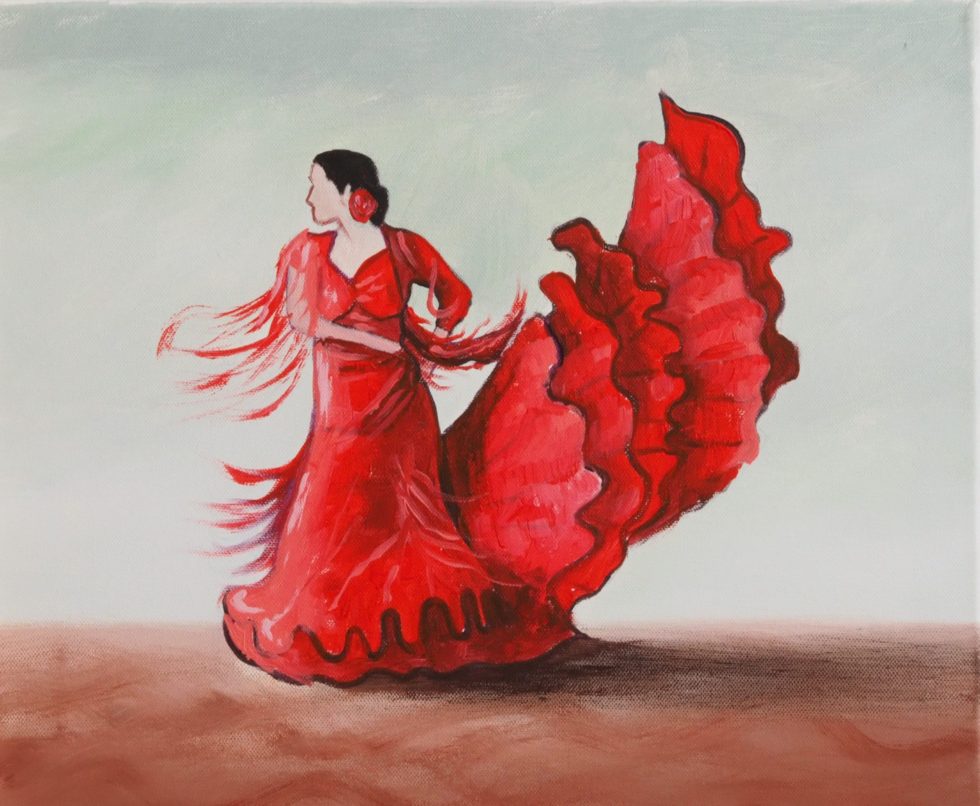

Barcelona, 1964) by Salvador Montañés, just to name a few, but rather, through the words of people who worked and lived with her, we hope to reconstruct a vivid impression of who this person really was and peel away the layers of myth to feel her presence. We won’t go over the details of her biography, for that there are magnificent books such as “Queen of the Gypsies” (Sevilla Press, 1999) by Paco Sevilla, “Carmen Amaya o la Danza del Fuego” (Espasa Calpe, 1994) by Mario Bois, “Cuando duermo, sueño que estoy bailando” (Libros PM, 1995) by Francisco Hidalgo Gómez or “Carmen Amaya la bailaora genial” (G.P. But the collective memory of this person and her dance continue to be absolutely current for the new generation of flamenco dancers – stars like Antonio Canales, Juana Amaya, Juan Andrés Maya and José Antonio himself of Spain’s National Ballet who just premiered his work “Leyenda” based on Carmen Amaya, continue to find inspiration in this petite individual who transformed flamenco dance for good.ĭeflamenco wishes to pay tribute to Carmen by declaring the month of November “Carmen Amaya Month”. That was forty years ago, ninety since her birth. President John Kennedy was assassinated, Carmen Amaya died in Begur (Girona). On November 19th, 1963, a few days before U.S. Dolores Giménez, president and founder of the Asociación Cultural Flamenca de Madrid. When Carmen found out, she went right to the neighborhood and danced for her ‘gitanicos’”.

My older sister tells how she performed in the theater in Barcelona…all the tickets were sold out and many gypsies from Somorrostro couldn’t get in, either because they couldn’t afford it or because there were no tickets left. My family lived in Somorrostro, where Carmen was born, so they were neighbors. “And the woman…that humanity she had that made her special. Even now at eighty she still talks about how she came on stage, that majestic presence, that temperament, her electrifying personality. First it was my mother always telling me about her…how she danced, what a good person she was. “Her name has always been a part of my life. Part sixth: Lucero Tena, dancer and castanet soloist (México) Teo Morca, dancer and choreographer (USA) Part five: Pepita y Goyo Reyes, dancers, choreographer (Madrid). Part four: Sara Lezana, bailaora (Madrid) Part thress: Pepita Funez, dancer (Madrid) Part two: Luisa Triana, dancer and choreographer (Triana, Sevilla) Part one: Entrevista a Domingo Alvarado, cantaor (Jerez de la Frontera)

The exhibit highlights Amaya’s importance and popularity during the years she circulated in the Big Apple. Carmen and Sabicas, Sabicas and Carmen, two giants whose destinies came together to transform flamenco from the ground up, leaving a legacy that only becomes more evident with the passage of time, because it is not possible to understand today’s flamenco without these two individuals.Ĭoinciding with Carmen Amaya’s centennial, there is an exposition in New York City through August 3rd, “100 Years of Flamenco in New York”, organized by the New York Public Library at the Vincent Astor Gallery at Lincoln Center. With poetic symmetry, flamenco fans have just also celebrated the centennial of another revered figure, the man who was Carmen’s guitarist and companion for many years, the maestro Agustín Castellón “Sabicas”. Producer Sol Hurok advertised Carmen as the “human Vesuvius”, and flamenco came to represent the essence of Spain for the entire world. It was an image Hollywood was quick to capitalize on, and Carmen Amaya personified that popular fantasy. Soon writers and journalists were making use of breathy words such as “passion”, “fury” and “fire” to describe flamenco. A form of expression that was a break from the gentle sweetness that had characterized flamenco dance until that point.

A way of dancing that depends on rhythm and strength, intensity and power. The flamenco legacy of Carmen Amaya continues to be relevant.


 0 kommentar(er)
0 kommentar(er)
